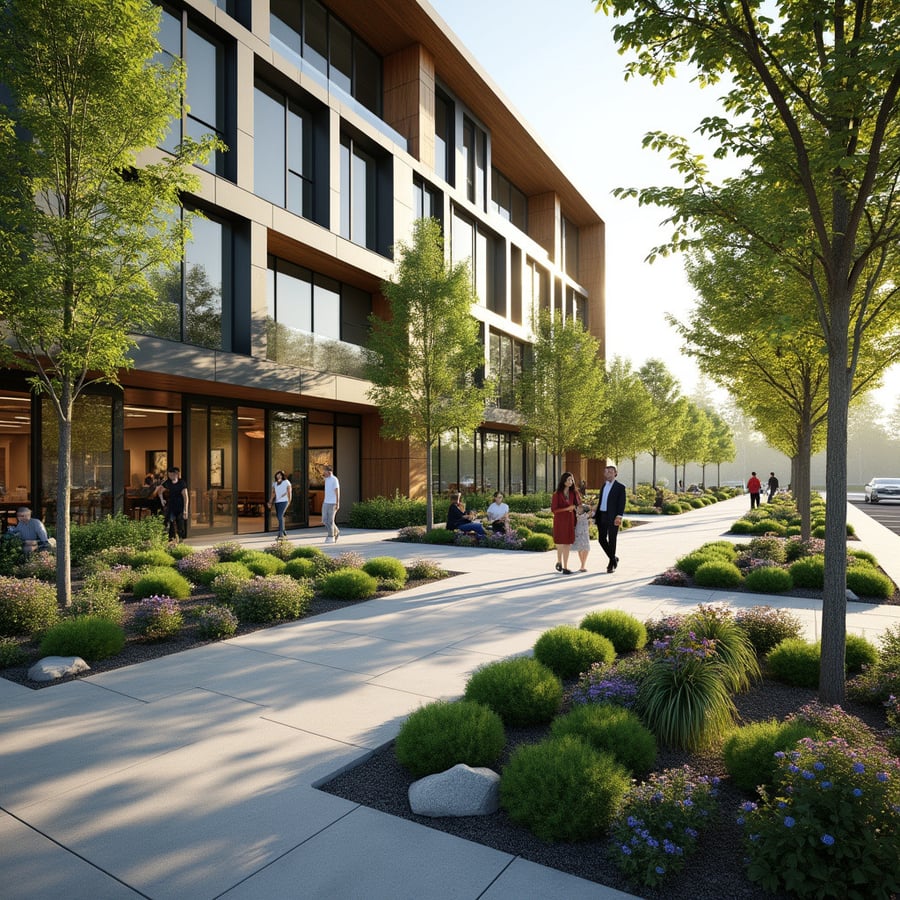
As a business owner or property manager, you understand that your commercial property's landscape is more than just greenery—it's your business's first impression, a reflection of your brand, and a significant investment in your property's value. Whether managing an office complex, retail space, or industrial facility, professional commercial property landscape design can transform your outdoor spaces into functional, sustainable, and visually striking environments that work as hard as you do.
Understanding the Impact of Professional Commercial Landscape Design
When you invest in professional landscape design for your commercial property, you're not just beautifying your space—you're making a strategic business decision. A well-designed commercial landscape can increase your property value by up to 20%, reduce energy costs through strategic plant placement, and create an inviting atmosphere that attracts and retains both customers and employees.
Key Elements of Successful Commercial Landscape Design
Your commercial landscape design should incorporate several crucial elements to maximize its effectiveness and return on investment. Professional commercial landscaping designs typically include:
Functional Space Planning
Your outdoor space needs to serve multiple purposes while maintaining visual appeal. Through expert commercial outdoor space planning, you can create areas that:
Create comfortable gathering spaces for employees and visitors Establish clear pathways and circulation patterns Incorporate adequate parking lot landscaping Design welcoming entrance areas that guide visitors to your building Include practical elements like outdoor seating and waste receptacles
Sustainable Design Solutions
Modern commercial landscapes must balance aesthetics with environmental responsibility. By implementing sustainable landscaping practices, you can:
Reduce water consumption through intelligent irrigation systems and drought-resistant plantings. Lower maintenance costs with native species that require less care. Improve stormwater management through permeable surfaces and rain gardens. Create wildlife-friendly environments that support local ecosystems. Minimize chemical use through integrated pest management strategies.
The Role of Hardscaping in Commercial Landscapes
Professional hardscaping for commercial properties is essential for creating functional and attractive outdoor spaces. Your hardscaping elements should include:
Durable walkways and pathways that meet ADA requirements Retaining walls that manage grade changes and create visual interest Parking lot islands and medians that direct traffic and add greenery Outdoor seating areas and gathering spaces Water features that create focal points and mask noise.
Year-Round Maintenance Considerations
Your landscape design should account for all seasons, including winter maintenance. Professional landscaping maintenance for businesses ensures your property looks its best year-round, while commercial emergency snow removal services keep your property safe and accessible during winter months.
Community Integration and Impact
Your commercial landscape doesn't exist in isolation—it's part of the larger community fabric. Professional community landscaping services can help you:
Create seamless transitions between your property and surrounding areas. Maintain consistency with local architectural styles. Comply with municipal landscaping requirements. Contribute to neighborhood beautification efforts. Support local biodiversity initiatives.
Making the Investment Work for You
When planning your commercial landscape design, consider these practical aspects:
Budget Planning
Your landscape design investment should be viewed as a long-term asset. Consider:
Initial design and installation costs Ongoing maintenance requirements Potential energy savings from strategic planning Water conservation measures and their long-term impact Future expansion or modification possibilities
Implementation Timeline
A successful commercial landscape design project typically follows these phases:
Initial consultation and site analysis Concept development and design presentation Construction documentation and permitting Phased installation to minimize business disruption Establishment period and maintenance planning
Choosing the Right Professional Partner
When selecting a commercial landscape design partner, look for:
Extensive experience in commercial projects similar to yours Knowledge of local climate and environmental conditions Strong portfolio of completed projects Comprehensive service offerings from design through maintenance Professional certifications and insurance Proven track record of meeting deadlines and budgets
Moving Forward with Your Commercial Landscape Design
Your commercial property's landscape is a crucial business asset that deserves professional attention and expertise. By investing in professional commercial landscape design, you're not just beautifying your property—you're making a strategic decision that will benefit your business for years.



